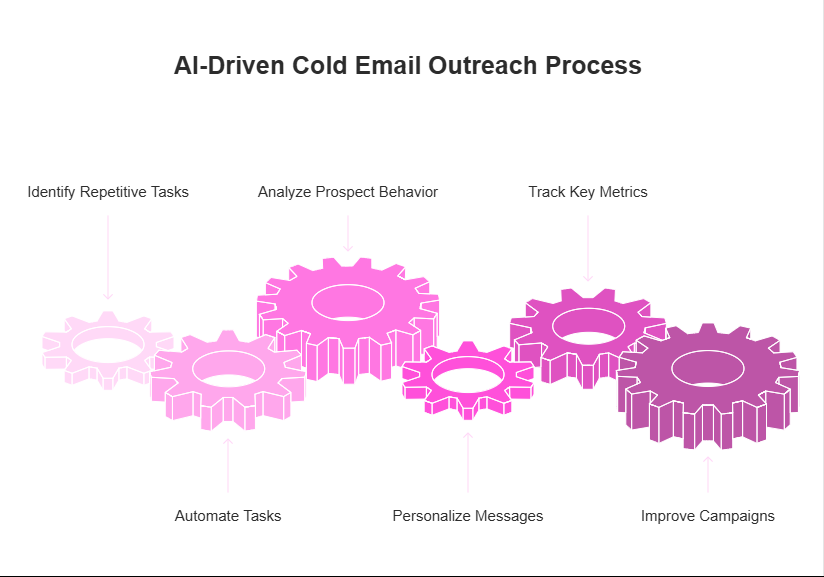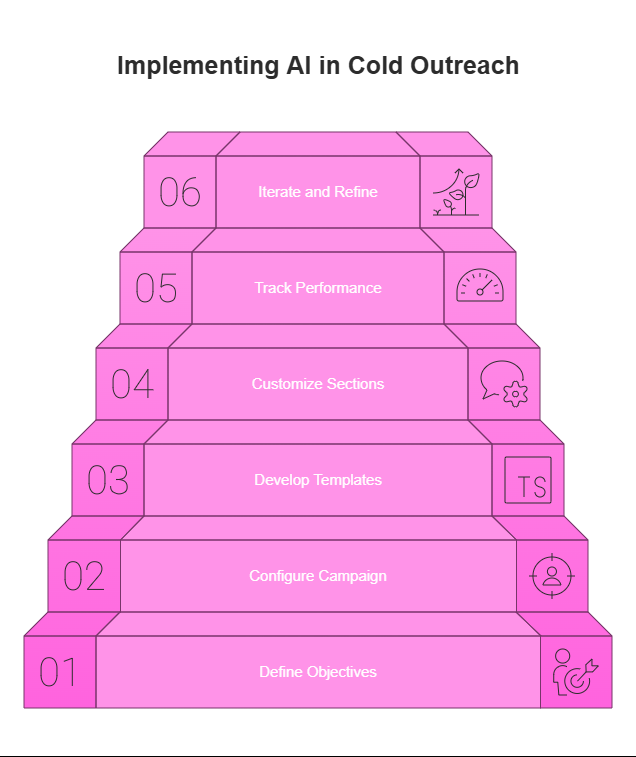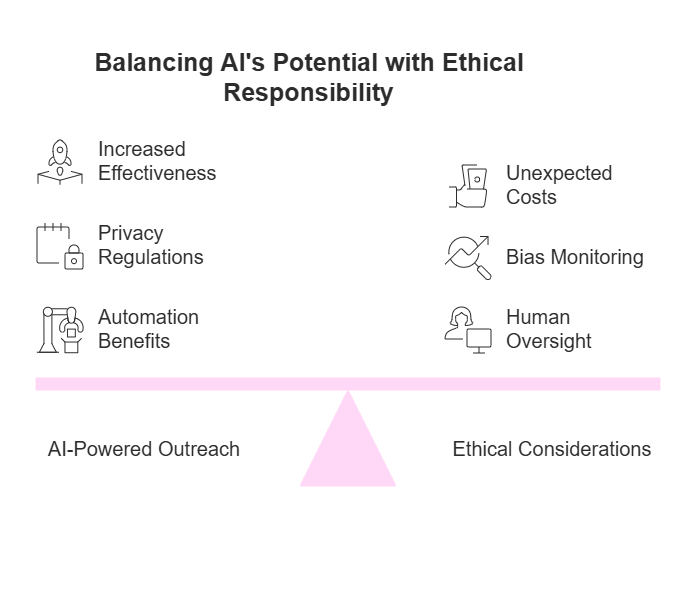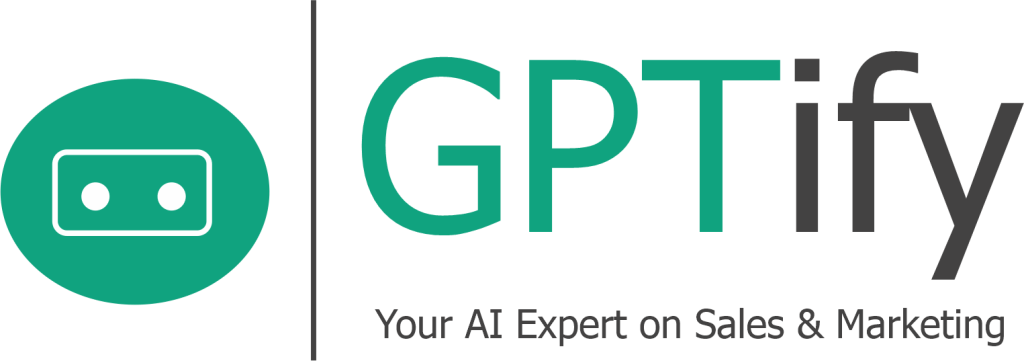Cold email outreach needs a major upgrade, and AI offers practical solutions to boost your results. This article walks you through why traditional methods fall short and how smart automation can transform your approach without losing the human touch. You’ll discover how to blend technology with personalization for higher response rates and more efficient workflows.
Whether you’re new to AI or looking to improve your current approach, this guide provides actionable insights to make your cold outreach more effective right away. The goal isn’t replacing human connection but making it possible at scale.
Transforming Cold Outreach with AI: The Future of Sales Communication
Sending cold emails often feels like shouting into a void. Sales teams spend hours crafting messages that go unopened, with email marketing benchmarks showing average open rates hovering around 21.5%. This frustrating reality leaves many professionals wondering if their efforts are worthwhile.
Cold outreach AI offers a better way. Modern tools now enable sales teams to create personalized messages at scale without the manual drudgery. Instead of generic templates, AI cold email personalization analyzes prospect data to craft relevant, engaging content that resonates with each recipient.
Cubeo AI stands at the forefront of this revolution, helping sales professionals automate repetitive tasks while maintaining authentic communication. The result? More responses, meaningful conversations, and ultimately, better conversion rates.
Why Traditional Cold Outreach Is Falling Short
Let’s face it, traditional email prospecting just doesn’t deliver results anymore. The numbers paint a pretty grim picture – average response rate for cold emails sits at a mere 1%, according to HubSpot research. This dismal performance stems from several fundamental flaws in how we approach prospects.
Research consumes too much selling time. Sales teams spend over three hours daily researching prospects before sending emails. This labor-intensive process creates bottlenecks that prevent scaling efforts effectively. When pressed for time, we often resort to shortcuts that compromise message quality and relevance.
Personalization remains superficial in most campaigns. Adding a first name or company mention isn’t enough to create genuine connection. Without deeper personalization, messages blend into inbox noise. According to Saleshandy, truly personalized emails can boost response rates by up to 142%, yet most outreach lacks this depth.
Follow-up management creates another layer of complexity. Sales professionals must track dozens of conversations simultaneously, often missing optimal timing windows. Most deals actually require multiple touchpoints, yet manual tracking systems frequently let promising leads slip through cracks.
Targeting errors waste valuable resources. Nearly 50% of prospecting efforts focus on recipients who aren’t good fits. This shotgun approach creates frustration for both senders and recipients. In a way, we’re spending half our outreach energy on the wrong people.
Automated cold outreach emails offer a better path forward. Automation should focus on enhancing the human touch that drives meaningful business relationships, not replacing it.
How AI Transforms Cold Email Outreach
Sales teams often struggle with traditional outreach methods, but AI actually changes the game completely. Cold outreach AI helps teams focus on what matters by handling the boring stuff automatically.
When machines take over repetitive tasks, sales professionals gain back valuable time. In a way, this shift allows teams to redirect energy toward strategy rather than data entry. A SaaS company saw pretty impressive results with this approach. Research from Medium shows they achieved a 45% increase in open rates. They also boosted conversions by 30%.
Data-driven insights enable personalization at a level we couldn’t imagine before. AI systems analyze prospect behavior and company information. They sort of create a digital fingerprint for each contact. These systems then craft messages that connect on a personal level. Generic templates become a thing of the past. A marketing agency using this technique experienced a 50% jump in lead conversion rates through smart follow-up sequences.
The real power of AI cold email campaigns comes from their ability to learn. According to Klenty’s research, only 23.9% of sales emails get opened. This statistic makes continuous improvement absolutely necessary.
Smart AI tools track several key metrics:
- Open rates across different subject lines
- Response patterns based on message content
- Best sending times for specific industries
- Effective follow-up sequence structures
This feedback loop basically creates campaigns that improve with each interaction. The technology adjusts based on real results, not assumptions. For teams looking to boost results without hiring more people, AI offers a really compelling solution.

5 Ways to Use AI in Your Cold Outreach Strategy
Practical implementation actually makes all the difference when adopting AI for B2B cold emails. Moving beyond theory, these five strategies offer concrete ways to enhance our outreach with intelligent automation. Each approach addresses specific pain points while maintaining human connection that drives successful sales conversations.
AI-Powered Research and Lead Qualification
Finding the right prospects saves countless hours for sales teams. AI for lead generation tools have transformed this process quite dramatically. Companies report a 51% increase in conversion rates through intelligent targeting.
Cubeo’s Lead Finder and Prospect Researcher agents uncover quality prospects based on ideal customer profiles. The accuracy improvements speak volumes – a recent study showed 73% lead scoring accuracy gains with these systems.
Teams using predictive lead scoring can triple their monthly qualified leads. Response rates jump 2.6× when utilizing enriched data, making this approach essential for modern sales strategies.
Generating Personalized Icebreakers and Subject Lines
Subject lines determine whether messages get opened or ignored by recipients. Applying LEO optimization principles to email subjects can raise open rates by up to 20%.
The six-hour framework works well for refining email templates too. We start with basic templates, then use AI content optimization to generate variations that resonate with different segments.
Automated Follow-up Sequences That Feel Human
Consistency wins deals in sales outreach. Manual follow-ups often fall through cracks due to busy schedules and competing priorities. Rule-based AI agent systems excel at sending timely reminders without sounding robotic.
When we configure reflex AI agents, we establish simple if-this-then-that rules that maintain communication style. For example, a friendly check-in two days after no reply keeps conversations flowing naturally.
These high-speed decision-making agents require minimal resources yet deliver maximum reliability. Their predictable behavior ensures our follow-up sequences maintain tone consistency across all prospects.
A/B Testing with AI to Optimize Performance
Guesswork has no place in modern sales strategies. We can automate A/B testing of subject lines, opening paragraphs, and call-to-action phrases.
AI systems generate multiple variations instantly and track performance metrics. This continuous improvement cycle happens in hours instead of days or weeks.
The structured approach to email variation testing ensures each element gets proper evaluation. This leads to steadily improving results with each campaign iteration.
Analyzing Response Data to Continuously Improve
Past interactions contain valuable insights that can inform future campaigns. Retrieval-Augmented Generation (RAG) systems feed historical response data into AI to craft context-aware messages.
This method helps reduce AI hallucinations – fabricated details that undermine credibility. By embedding past responses for context, our follow-ups become more relevant and personalized.
RAG for email optimization involves parsing messages into vector databases for later retrieval. This grounding in real interactions creates messages that feel authentic while maintaining scale across thousands of contacts.
Top AI Tools for Cold Email Personalization
Selecting the right technology actually makes a significant difference in our outreach results. The market offers numerous options, from comprehensive platforms to focused solutions that excel at specific tasks. Let’s explore what makes each type valuable for different sales teams.
Research from Nureply shows teams using AI email software experience a 50% reduction in outreach time while enjoying a 35% increase in lead conversion rates. This efficiency gain comes from automating repetitive tasks while enhancing message quality. In a way, these tools serve as virtual writing assistants that learn our communication style.
All-in-one solutions versus specialized assistants present different advantages for our workflows. Comprehensive platforms like Lemlist offer end-to-end campaign management, while focused tools like SmartWriter excel at generating personalized icebreakers. Our team size and workflow will determine which approach works best. The best AI email writing tools often specialize in specific aspects of the outreach process.
Budget considerations matter too. Free tiers with limited monthly sends exist on many platforms – perfect for testing capabilities before committing. Higher investment unlocks more sophisticated features and removes sending caps.
Paid plans typically range from $20 to $200 monthly, with enterprise pricing available for larger teams. More or less, these premium tiers provide access to:
- Unlimited AI-generated variations
- CRM integrations for seamless workflow
- Advanced analytics dashboards
- Multi-user collaboration tools
- Custom training on successful emails
Feature comparison should focus on our specific needs. Mailshake excels at sequence automation, while other tools might offer superior analytics. The right choice depends on priorities – whether that’s ease of use, personalization depth, or integration capabilities. AI email tool comparison metrics can guide our decision-making process.
Personalized emails can boost open rates by up to 26%, making customization features particularly valuable. We should look for the best AI for cold emailing that analyzes prospect data automatically and suggests relevant talking points. User reviews often highlight which platforms deliver the most natural-sounding messages – a critical factor for maintaining authentic communication with potential clients.
Step-by-Step Guide to Implementing AI in Your Cold Outreach
Integrating AI into cold outreach doesn’t need to be complicated. In fact, this straightforward roadmap breaks down the process into manageable phases that build upon each other.
- Define clear objectives and KPIs
We should first establish what success looks like for our AI cold email campaigns. Are we aiming to book more demos? Increase response rates? Maybe reduce time spent on outreach? Setting specific targets makes progress measurable.
- Configure our first AI-powered campaign
Let’s begin with a small segment of our prospect list rather than the entire database. We need to select an AI tool compatible with our existing CRM. Then import prospect data. Basic personalization should go beyond just names – industry references and company challenges create stronger connections.
- Develop template frameworks for AI enhancement
Our templates need clear structures with placeholders for AI personalization.
- Include sections for customization
These sections should feature icebreakers based on prospect research, problem statements relevant to their industry, and value propositions tailored to specific roles. Different call-to-action variations help us test effectiveness.
- Establish tracking systems and benchmarks
We must monitor performance against industry standards. According to B2B Rocket, average open rates for B2B cold emails hover around 36% with a 7% reply rate. Cold email automation AI systems should, of course, continuously learn from this feedback loop.
Implementation works best as an iterative process. We start simple, measure results, and gradually increase sophistication as our comfort with the technology grows.

Best Practices for AI Cold Outreach That Gets Results
Implementing AI effectively requires more than just selecting fancy tools. We need to balance ethical AI sales practices with smart AI cost management strategies. Actually, teams following these best practices consistently outperform industry benchmarks. According to Saleshandy, cold emails average around 24% open rates – but with the right approach, your results can be significantly better.
Finding the Right Balance Between Automation and Human Touch
Collaboration forms the foundation of successful AI adoption. When we involve sales teams early in the selection process, buy-in happens naturally. A Deloitte survey reveals 75% of knowledge workers already use AI tools, saving up to 90% of time on routine tasks.
Set clear boundaries between what machines handle and what people do. AI works best with data collection and initial outreach. Our teams should focus on relationship development instead. Pilot projects help refine our approach before full deployment. This method ensures we maintain authentic connections throughout the customer journey.
Avoiding the Uncanny Valley of AI Personalization
Messages that feel artificially constructed often come across as inauthentic to prospects. Well, establishing clear guidelines helps prevent this uncanny valley effect by creating reasonable boundaries for automation.
We should blend AI-generated content with human edits to create natural-sounding messages. Vary templates substantially to avoid spam flags. According to B2B Rocket, generating one lead typically requires approximately 306 cold emails, so quality matters more than quantity.
Base your messages on real data rather than assumptions. This approach, in a way, creates genuine connections while avoiding excessive personalization that might seem intrusive.
Ethical Considerations in AI-Powered Outreach
Transparency about automation forms the cornerstone of responsible outreach. While 79% of sales leaders see AI boosting effectiveness, 53% report unexpected costs when ethical guidelines take a backseat.
Our ethical policies should respect privacy regulations like GDPR and CCPA. We need to monitor systems for bias or inaccuracies that could damage relationships. Human oversight remains essential to catch potential issues before they reach prospects.
Regular audits keep messages fresh and outreach effective. This balanced approach, at the end of the day, builds trust while maximizing technology’s potential without compromising ethical standards.

How Cubeo AI Can Enhance Your Cold Outreach Strategy
Cold outreach becomes more effective when we use tools specifically built for sales communication. The Cubeo AI platform actually makes this possible without requiring technical skills from teams. According to Solda AI, AI sales agents are 30% more cost-effective than traditional methods. These agents maintain authentic-sounding communication that prospects rarely distinguish from human outreach.
In our experience, customizable solutions often yield the best results. With no-code AI agents, sales teams can tailor messages to specific audience segments. This personalization leads to higher response rates and more meaningful conversations.
Building Custom AI Agents for Your Outreach Process
Want to create personalized AI assistants? You can follow a seven-step AI development process that requires no coding expertise. This framework helps sales teams define goals, organize data, and select technologies.
A recent B2B software company case study from Callin.io shows the potential impact. After implementing custom AI agents, they increased daily outreach calls by 580%. Their connection rates improved by 37% too, which is pretty impressive for a small team.
Integrating Cubeo AI with Your Existing Sales Stack
Connecting with your current tools eliminates implementation headaches, right? The platform offers pre-built connectors for popular CRMs and email services.
Through drag-and-drop interfaces, we can map data fields rather than dealing with complex API configurations. This approach makes sales stack automation accessible to everyone on the team.
FAQs
How can AI boost my cold email response rates?
AI enhances cold email response rates through improved personalization and automated follow-ups. It analyzes data to create hyper-personalized content and determine optimal sending times. These efforts lead to higher engagement and better results, significantly boosting open and response rates.
Which AI tools excel at cold email personalization?
Several AI tools are great at cold email personalization, including Smartlead, Copy.ai, and Woodpecker. These tools use recipient data and AI to create tailored emails. Such personalization enhances email effectiveness and engagement. At Cubeo AI, the Personal Email Writer Agent can craft personalized, engaging emails by seamlessly integrating LinkedIn insights by lead’s name. Boost your outreach effortlessly and experience precision communication that truly converts.
What metrics should I track for AI-powered cold campaigns?
For AI-powered cold campaigns, track metrics such as open rates, click-through rates, and conversion rates. These metrics provide insights to refine email strategies. Analyzing these metrics helps optimize campaign performance.



